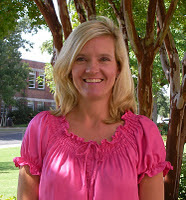 I have found that most animal-assisted therapy (AAT)teams
start with visiting nursing homes in which dementia patients reside or visiting
hospitals and adult day centers. Generally,
they are involved with the activities department of the facility, visiting in
the Animal Assisted Activity realm, the warm, fuzzy visit. That is where I began many years ago.
I have found that most animal-assisted therapy (AAT)teams
start with visiting nursing homes in which dementia patients reside or visiting
hospitals and adult day centers. Generally,
they are involved with the activities department of the facility, visiting in
the Animal Assisted Activity realm, the warm, fuzzy visit. That is where I began many years ago.
Put as simply as
possible, when introduced properly into a therapeutic setting, animals make
people feel better, improve quality of life and assist in healing. In addition, an animal’s loyalty and
authentic nonjudgmental willingness makes our relationships with them some of
the most enduring and safe interactions possible. Utilizing
animal-assisted therapy allows healthcare workers to relate with patients experientially,
rather than relying strictly on the therapeutic understanding of families,
individuals, and groups that may be lost, literally, in translation.
AAT has been found to be beneficial with all age groups,
children, adolescents, young and older adults.
In long-term care, focusing on AAT as compared to other non-animal
therapy activities. The outcome of the
study concluded that residents involved in the AAT activities were three times
more likely to initiate and have longer conversations than those involved in
the traditional activities. The most
important finding appeared to be the frequency of touch. Since touch is a considerable part of human
socialization and the elderly are often deprived of physical affection,
touching the animals during the visits increased the residents’ positive social
behavior and improved quality of life. The
next step is to prove to the world what we already know through research.
Dementia is a loss of previous levels of cognitive,
executive, and memory function in a state of full alertness. Primary dementia is irreversible. Alzheimer’s disease (AD), the most common
form of dementia, is a progressive disease for which there is no cure. This disorder creates a large and growing
public health problem. Because there is
currently no successful cure or method of prevention, the main goal of most
interventions is to improve patients’ quality of life. Social and recreational activities are
important for achieving these goals.
Although (AAT) has previously been instituted as a therapeutic activity
for residents of long-term care facilities, there is little empirical research
documenting its effectiveness, especially in patients with cognitive
impairments. Human-animal interaction
research is in great need of carefully controlled, empirical studies that are
able to demonstrate concrete, measurable results.

 This research project is designed to compare AAT with human
interaction in improving the social outcomes of persons with dementia living is
long term care facilities. We will
conduct a controlled trial with randomized cross-over between conditions.
Persons with dementia living in long
term care facilities will be included in the study. Consented, willing participants
will be assigned in random order to AAT or human interaction (control) blocks
for two weeks then switched to the other condition. Specially trained dogs and their handlers
will visit patients using standard AAT protocols. The control intervention consists of
conversation or reading from and looking at pictures in a newspaper to control
for non-specific benefits of one-to-one interaction. Presence of positive and
negative social behaviors and level of engagement will be measured during the
visits as well as weekly measure of the Cohen-Mansfield Agitation Inventory.
This research project is designed to compare AAT with human
interaction in improving the social outcomes of persons with dementia living is
long term care facilities. We will
conduct a controlled trial with randomized cross-over between conditions.
Persons with dementia living in long
term care facilities will be included in the study. Consented, willing participants
will be assigned in random order to AAT or human interaction (control) blocks
for two weeks then switched to the other condition. Specially trained dogs and their handlers
will visit patients using standard AAT protocols. The control intervention consists of
conversation or reading from and looking at pictures in a newspaper to control
for non-specific benefits of one-to-one interaction. Presence of positive and
negative social behaviors and level of engagement will be measured during the
visits as well as weekly measure of the Cohen-Mansfield Agitation Inventory.  Participating faculty will also engage undergraduate nursing
students who receive training in animal-assisted therapy to participate in this
project. Faculty believe this
opportunity will provide a positive learning experience for these students and
positively affect students’ overall attitude about caring for the elderly. In addition the effects of the visits and
interaction on the attitudes toward working with older people will be measured
with the students involved in the project.
Our results show that use of AAT is effective in improving the behavior
of individuals with dementia, it will potentially provide a safer and more
enjoyable intervention rather than reliance on pharmacology alone.
Participating faculty will also engage undergraduate nursing
students who receive training in animal-assisted therapy to participate in this
project. Faculty believe this
opportunity will provide a positive learning experience for these students and
positively affect students’ overall attitude about caring for the elderly. In addition the effects of the visits and
interaction on the attitudes toward working with older people will be measured
with the students involved in the project.
Our results show that use of AAT is effective in improving the behavior
of individuals with dementia, it will potentially provide a safer and more
enjoyable intervention rather than reliance on pharmacology alone.


















